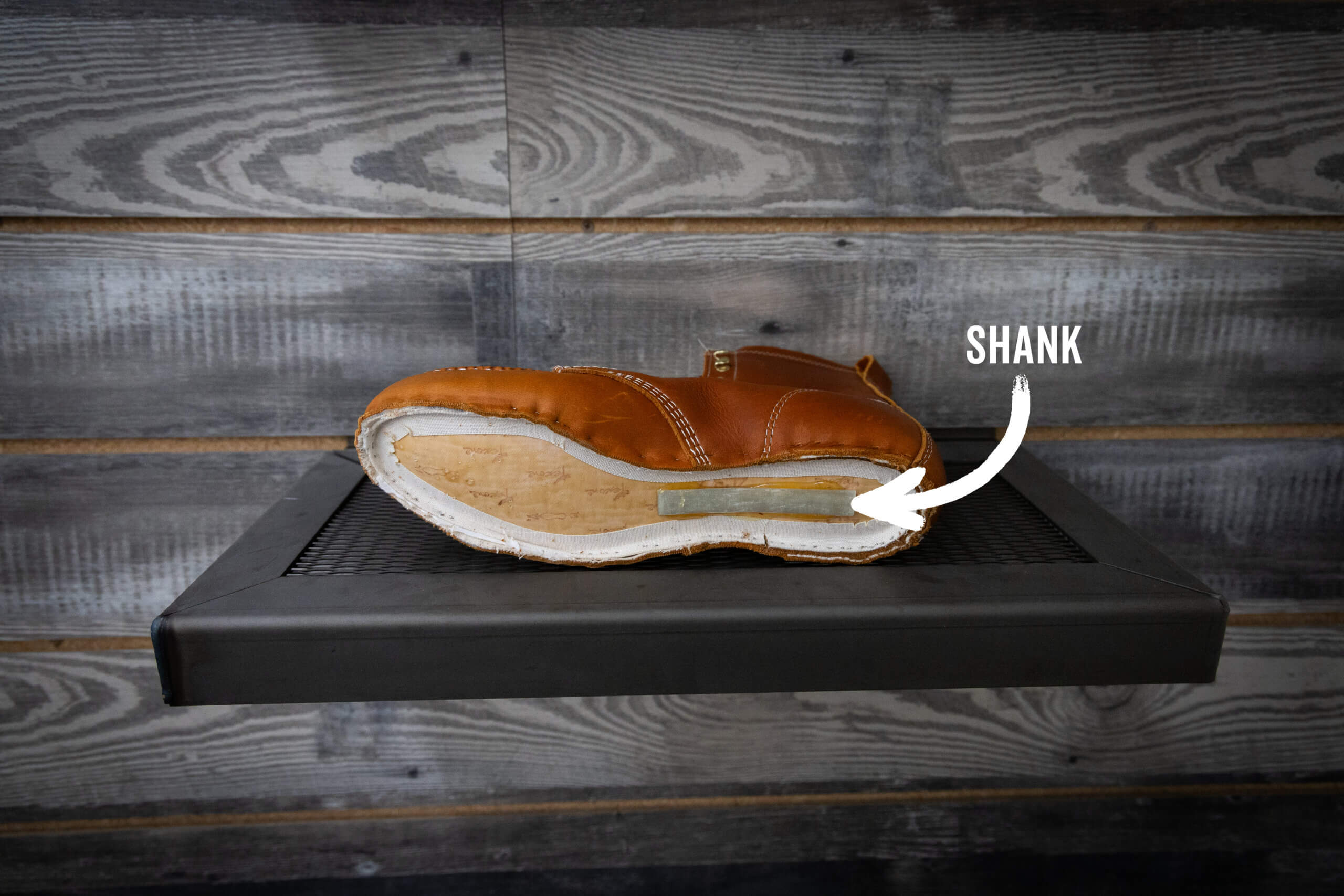In boot anatomy, the shank is a long, thin strip of stiff material between the midsole and insole that provides support and stability. If you're wondering how to tell if a boot has a steel shank, try bending them at the arch – if it doesn't flex, that's likely a yes. The shank is a key feature to look for in a pair of work boots for many labor-intensive jobs. Let's take a look at the function and different types of shanks.

What is the purpose of a shank?
The shank adds rigidity, which helps to keep your feet flat when walking on uneven or rough ground. This stability helps to reduce foot fatigue and discomfort, especially for long work days on tough sites.
What is the importance of the shank for blue collar workers?
The shank is an important piece of gear for many blue-collar careers. Construction workers, linemen, factory workers, and other professionals who work in conditions with rough terrain can benefit from boots with a tough shank. Here's a few more reasons why you should look for work boots with shanks:
- Longevity of your boots (added structural support)
- Added stability and weight distribution
- Improved arch support
The boot shank is handy for locking your foot into place when climbing ladders, and also makes work boots great for riding motorcycles.
If you're in the market for a solid pair of work boots, Some of the most popular Thorogoods are made in the USA with USA and globally sourced components and include a composite shank along with other tough materials that are built to last. Check out how our boots are made to learn more about the process.
What are the different kinds of shanks for boots?
Modern boots use a variety of materials including steel, composites, leather, plastics, and more. Here's a breakdown of the differences between some of the most common types of boot shanks:

Want to learn more about work boots? Check out our comparison of different kinds of safety toes next.
